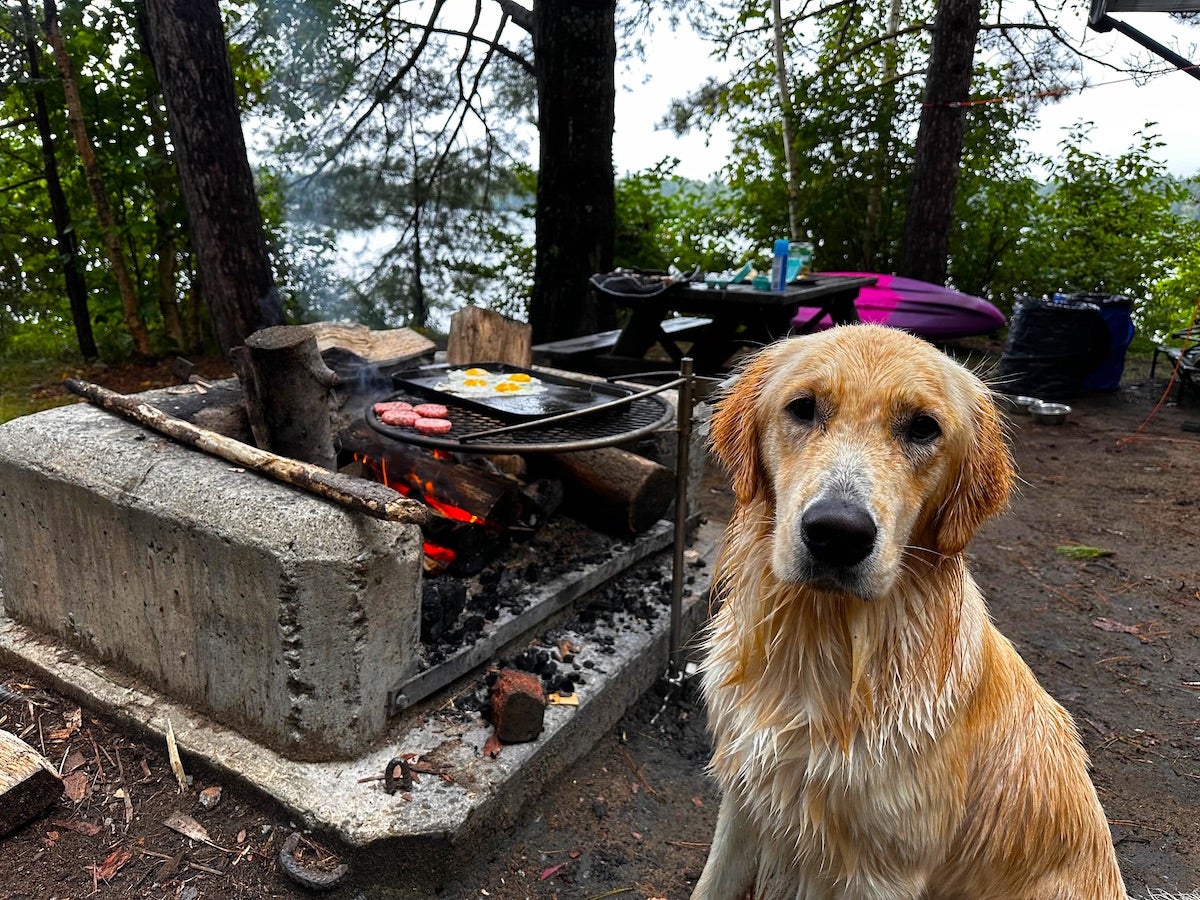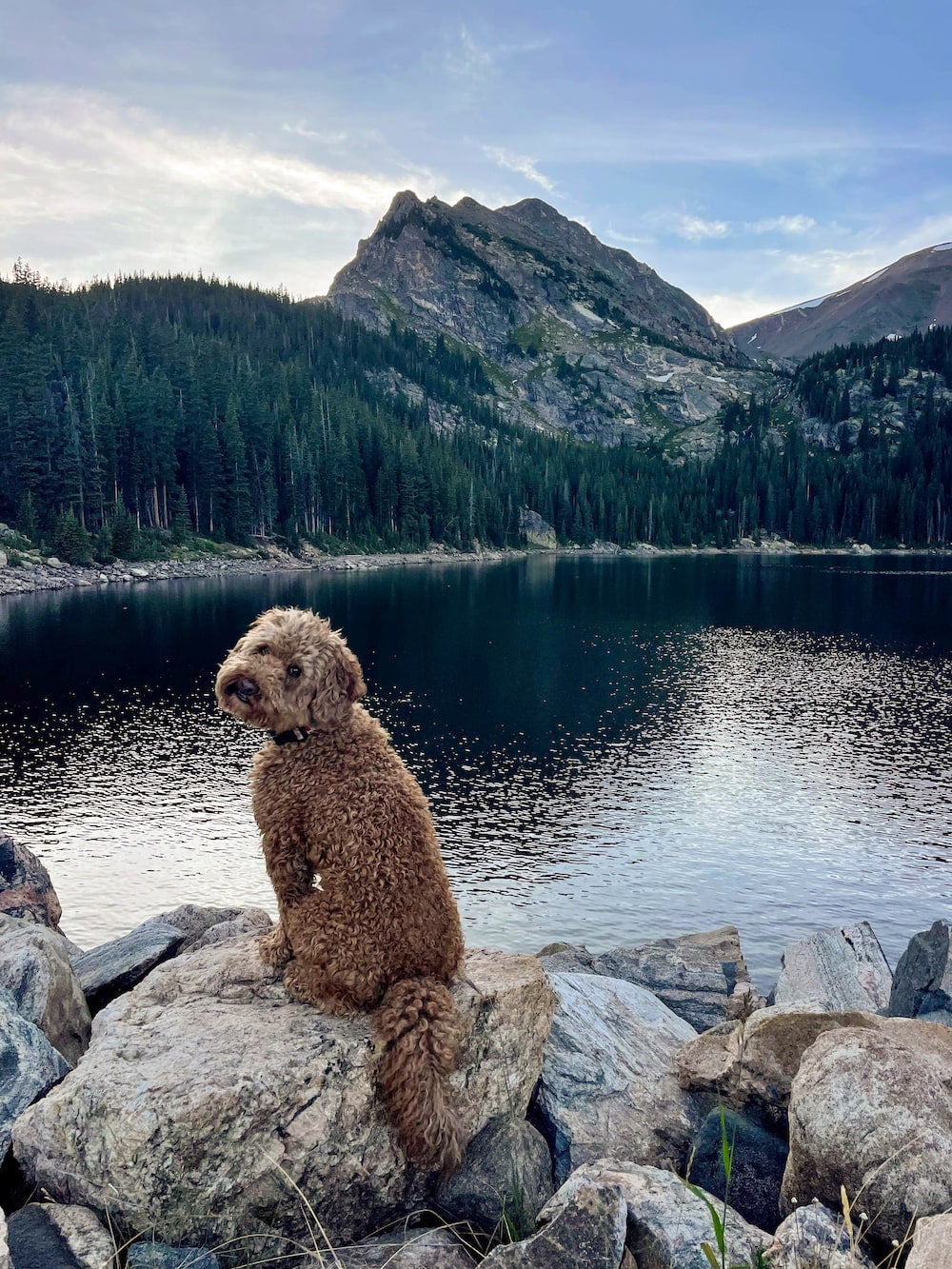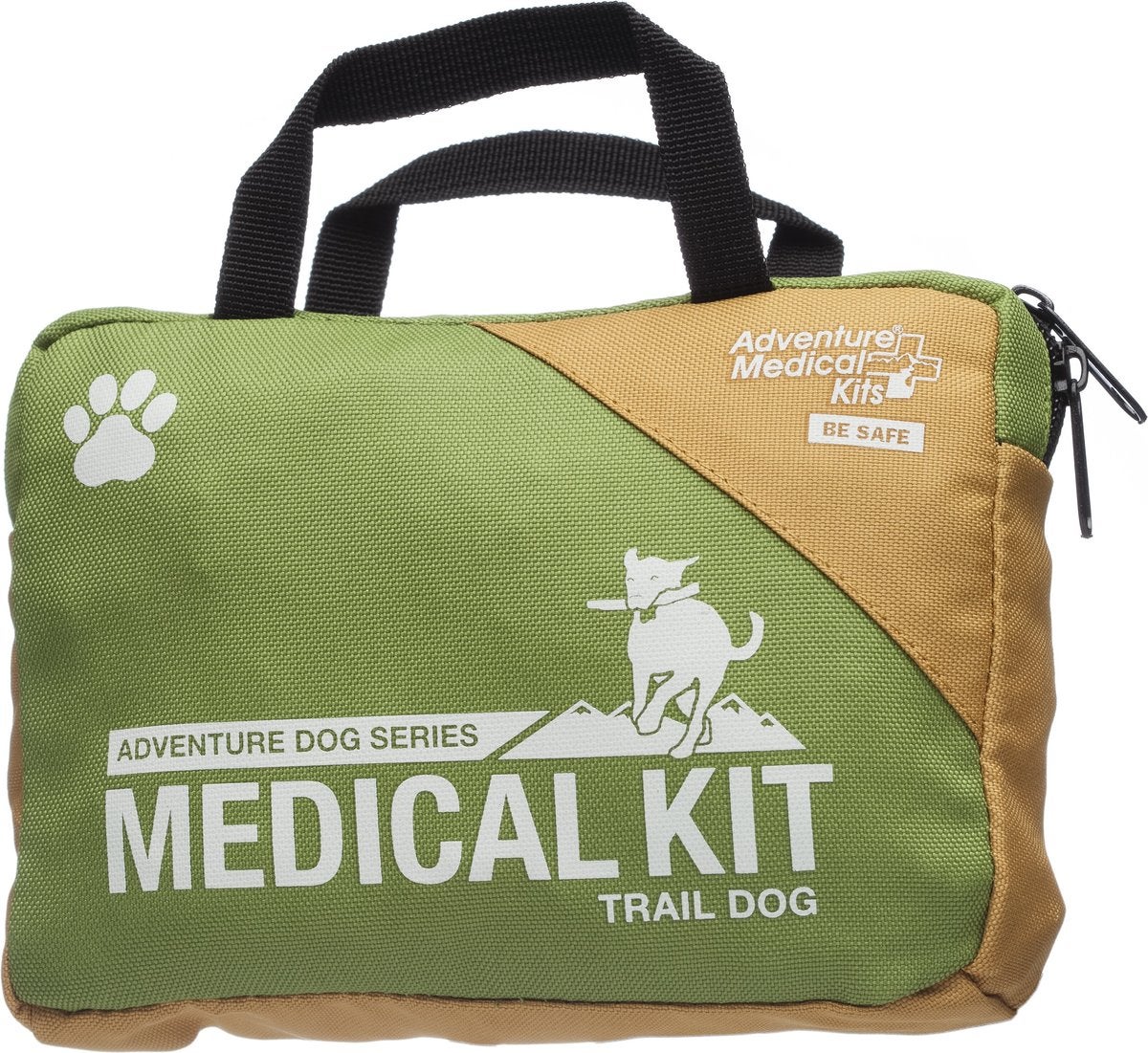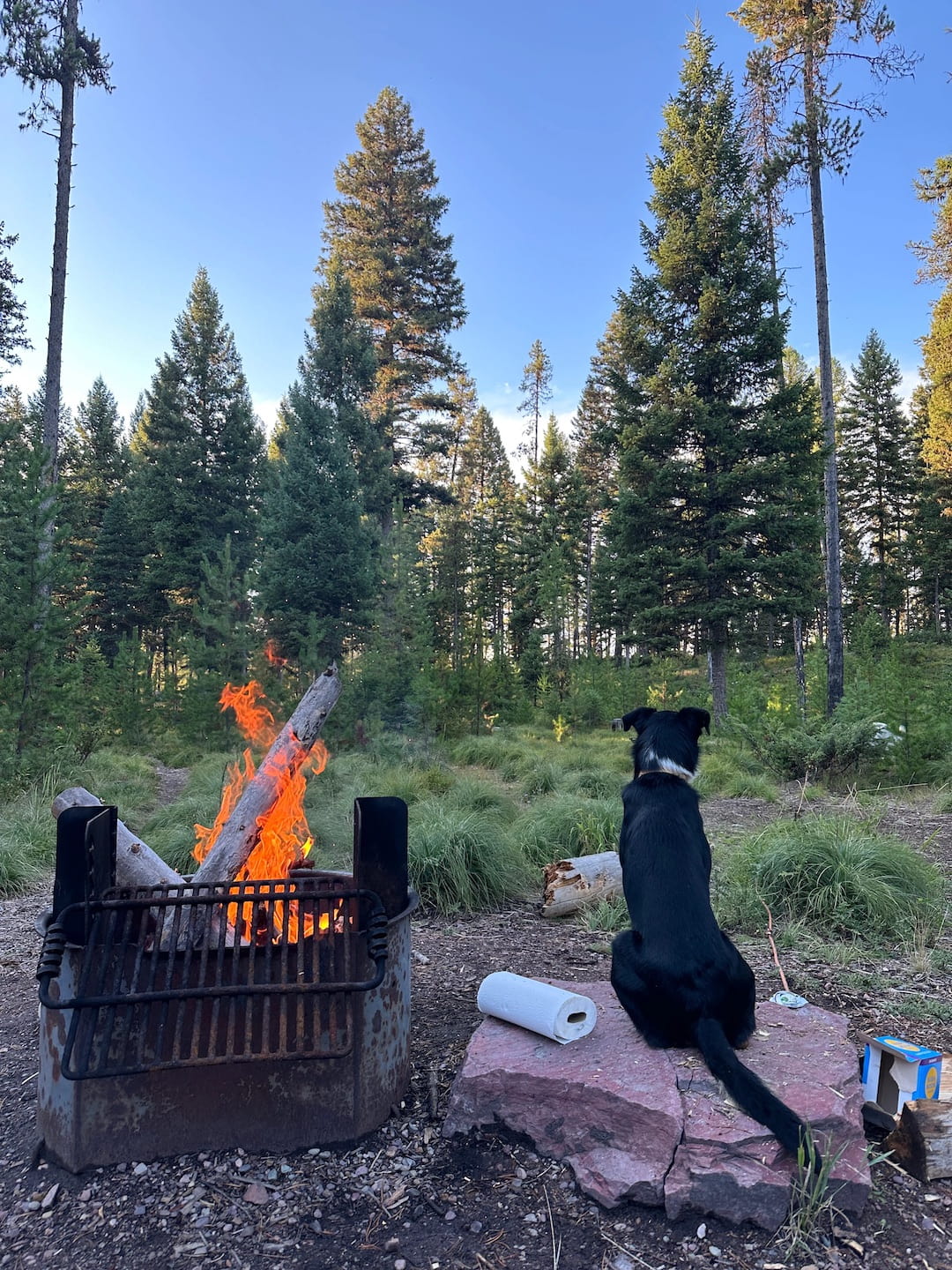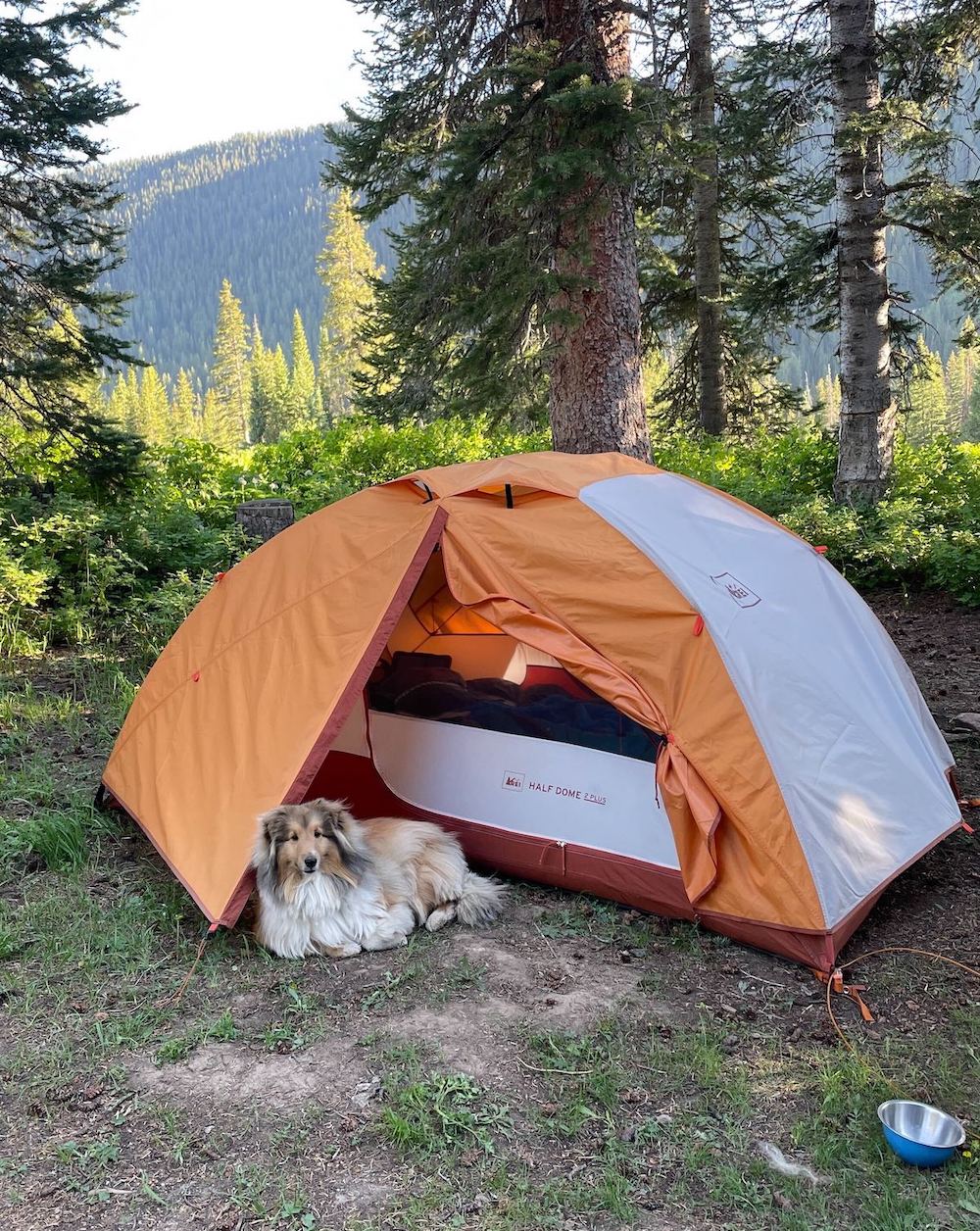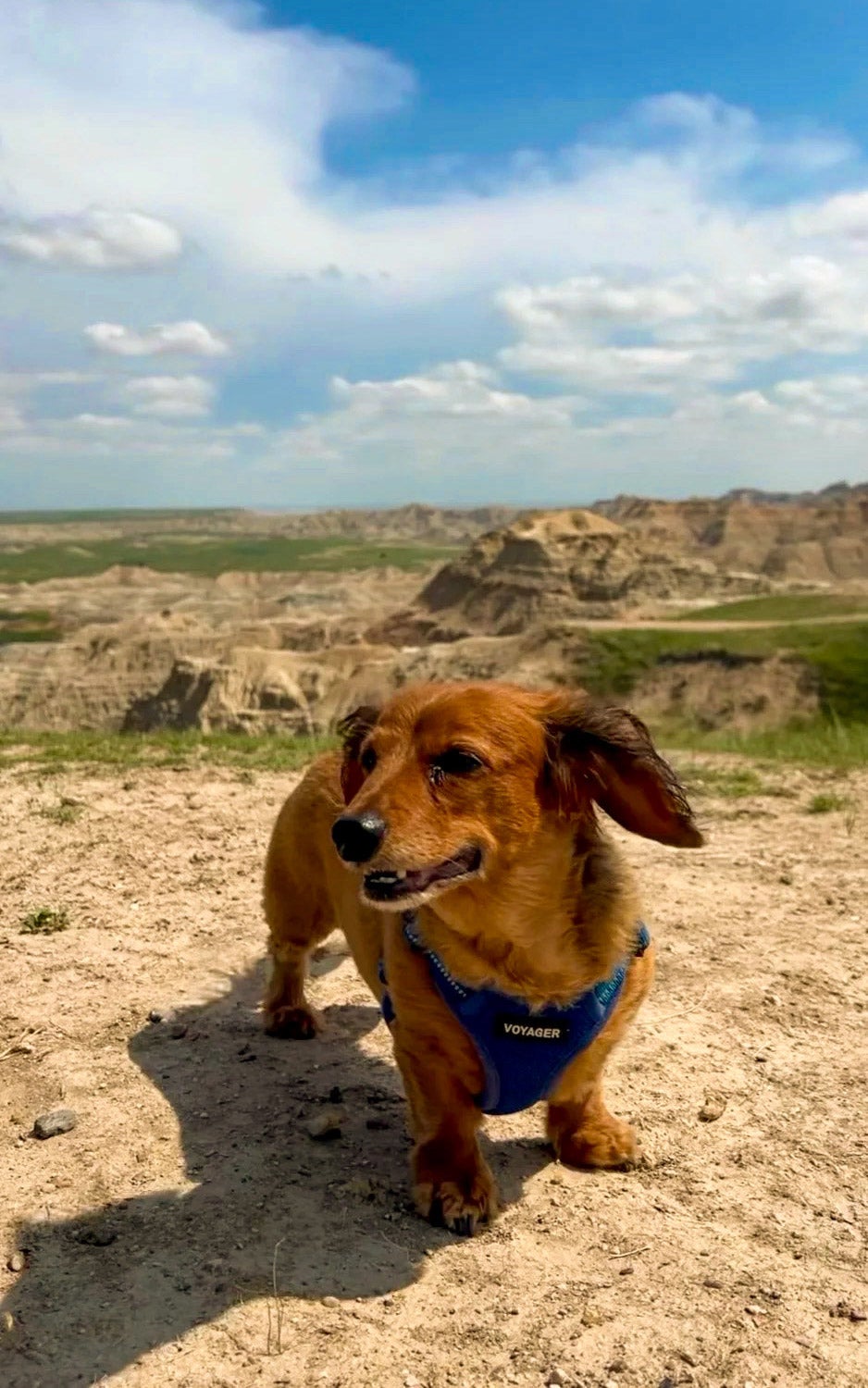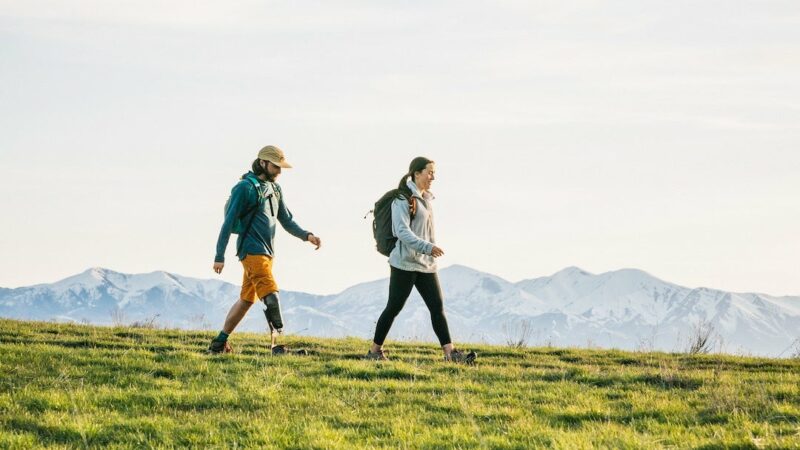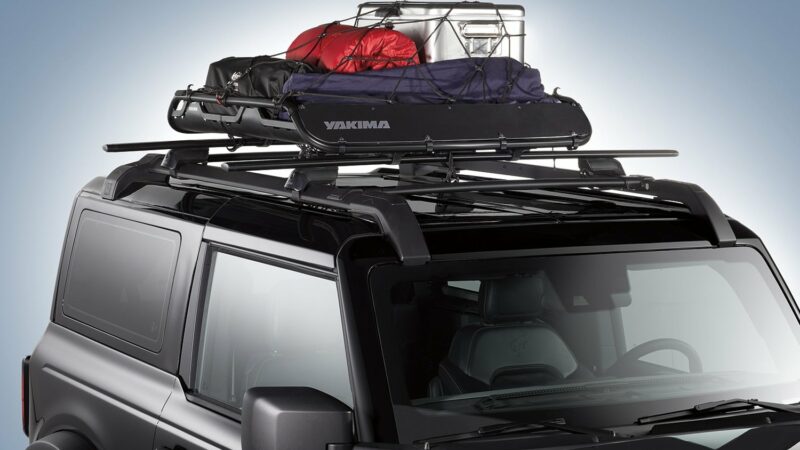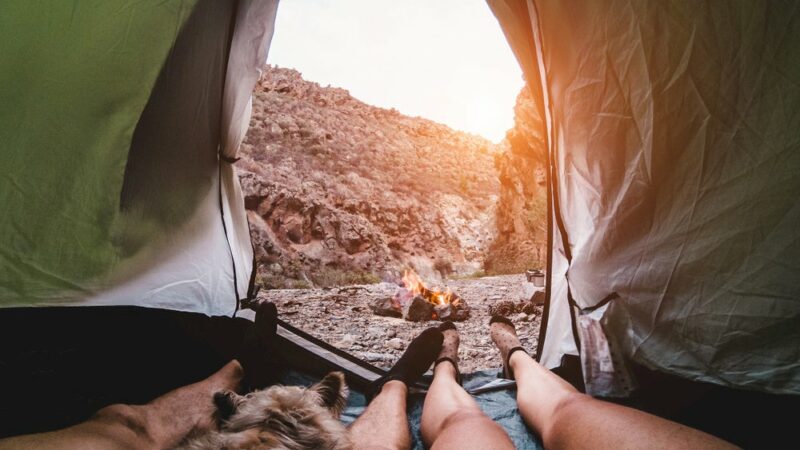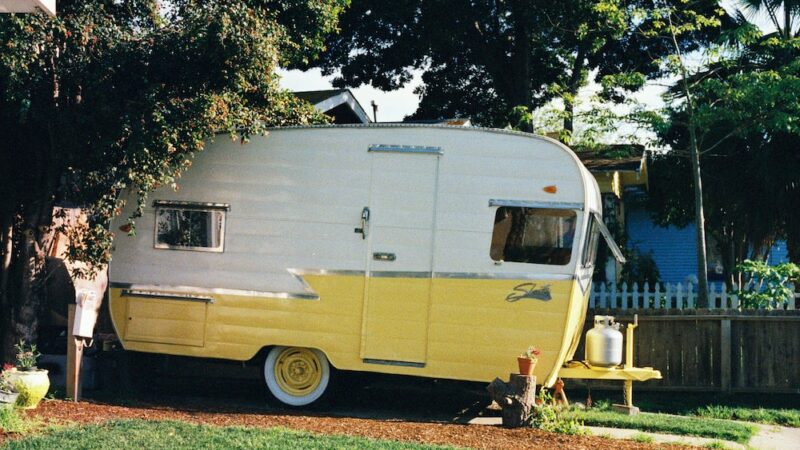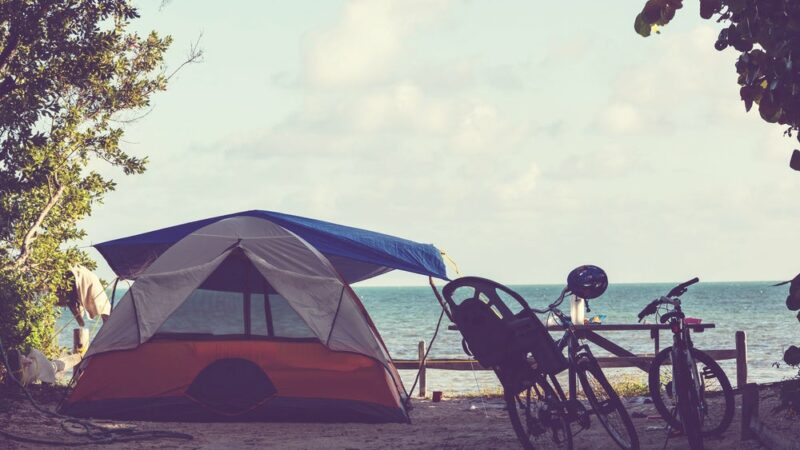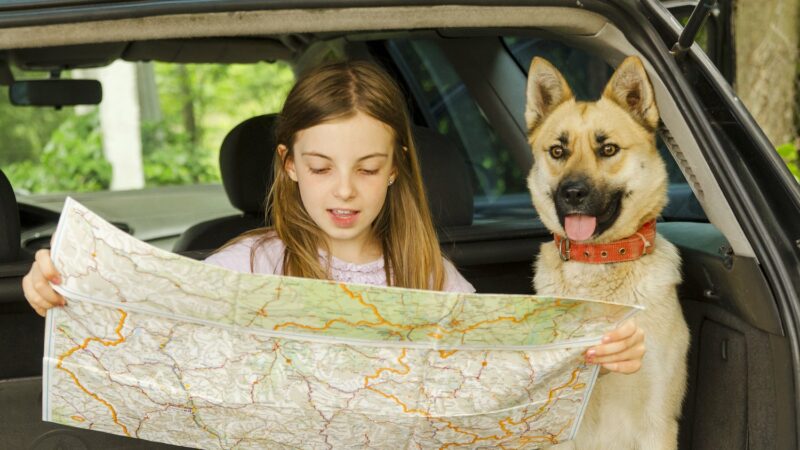Bring Your Dog Camping Safely and Stress-Free
We once had a dog called Kramer, named on account of how he entered a room. A stocky black labrador of the snooty English variety, he was the only purebred dog to ever take ownership of my wife Sarah and me. Sarah traded tutoring so we could afford him.
Old K-Man has been gone for a while now, but when I think back on backpacking with one of our many dogs, I think of him.
It was the perfect outing; a crisp weekend in June, just after snowmelt. Fishing rods at the ready, me and a buddy, Sean, with Kramer riding between us on the bench seat, drove gravel roads to a remote trailhead. From there, an easy 7-mile hike led to an alpine lake stocked with trout.
That was the plan anyway, but someone had erected a sign in the center of the singletrack. The way was impassable.
A microburst from a storm cell had felled much of the forest. The jumbled blowdown looked endless. We walked past the sign anyway.
At times, Sean and I were 10-feet off the ground scrambling over elevated logs. I was worried that Kramer wouldn’t be able to navigate the snarl. But he quickly bested us. It was a game for him; under trees and over trees.
At one point Kramer was 15 feet above us, his eyes shining from the thrill of it. For all the purebred retriever hype, he never retrieved anything in his life—didn’t care for it—but the loose fur on a lab’s thick chest, a desired trait bred to avoid cuts in heavy brush, served him well that day. We couldn’t stop marveling at his athleticism. Kramer was a ridiculously strong trail dog.
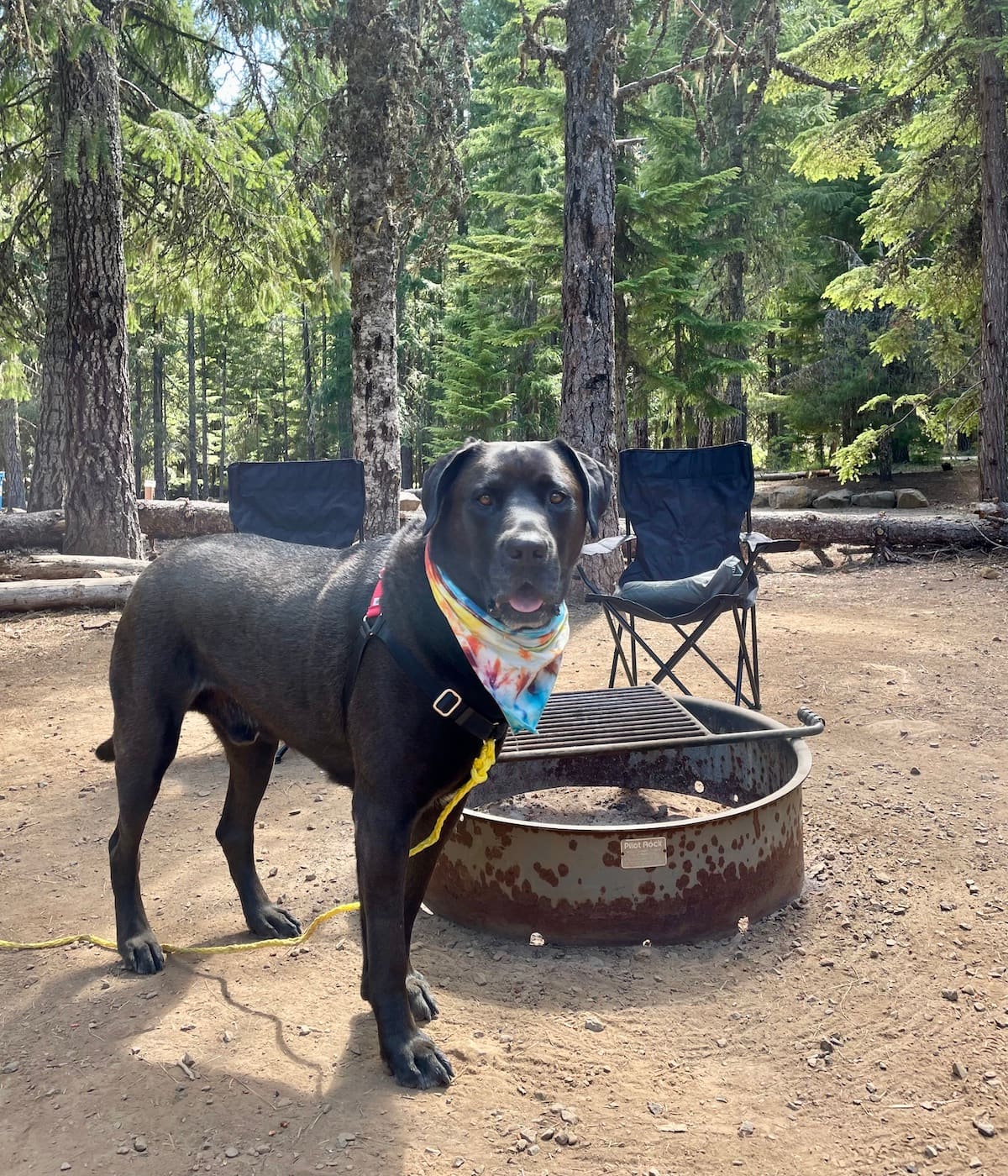
Photo by The Dyrt camper, Ryan W.
After an hour, the track reemerged, and then the lake. We had it to ourselves for two days and a night. Everybody else had turned around at the sign.
We ate trout cooked in foil in the coals of the campfire. Kramer ate the skin. With no other campers or dogs around, he stayed close and out of trouble. Unwilling to ‘rough it’ even though the ground was loamy and topped with pine needles, he slept half on top of me. I guess that’s never bothered me.
On the hike out, Kramer repeated his displays of evolutionary fitness. I was still young enough to fool myself into thinking that dogs and people never grew old and frail. I know better now, but when I think back on the dogs we’ve lost, I see them moving effortlessly through rough country—or curling up with the kids in tents.
Camping and dogs just feels right.
Some 30,000 years ago they first came to us as glowing eyes around campfires. Nowhere is the bond stronger.
Doggos don’t need much in the way of camping gear, but they do rely on us for planning.
Fit Pooches
One of the biggest mistakes that my fellow ski coach and our dog’s vet, Marcos Puiggari, sees with his Missoula, Montana clientele is a failure to recognize that dogs also need physical conditioning before a backcountry adventure.
Overweight dogs suffer from exhaustion. And dogs that lack fitness are quicker to overheat—which is perhaps the biggest threat to their life in the backcountry.
Their pads and joints need to be trail-hardened before you go. You do this by taking them on progressively longer hikes.
And getting them used to the heat is also important, if tricky. “With heat acclimation, you need to be careful,” says Marcos, “but once the dog is fit, you can slowly introduce warmer temps in the seventies and low eighties.”
Water and More Water
See the note about heat exhaustion above. Dogs primarily cool themselves by panting. Unlike humans and horses, they are at extreme risk in temps above 80 degrees. In that type of weather, if the dog is working hard in the sun its core temperature can quickly top 106 degrees.
In warm weather, only plan hikes around good water sources. Or plan to carry way more water than you would for yourself. “Dogs need to drink every 10 to 15 minutes in hot weather,” says Puiggari, “and they need to be cooled down with water by rubbing it into their coat too. Bring collapsible bowls. And pack heavy with water.”
And a warning: The toxins in blue-green algae blooms can be lethal to dogs.
Many state and county health websites will list locations, but keep your dog clear of stagnant water that has the telltale signs of a bloom—a green hue throughout the water column and a surface that looks like green latex paint.
Emergency Medicine
Puiggari packs a first aid kit for humans and a second one for his bird dogs when he’s hunting or camping.
What he brings depends on the trip.
If you’ll be close to emergency vet services, he recommends bringing what you need for routine cuts, stings, allergic reactions, and overuse injuries. That list includes bandages, gauze rolls, nonsteroidal anti-inflammatories, antibiotics (pills and topical), and antihistamines.
“I also always pack a saline solution,” says Puiggari. “You can use it to flush an eye, a wound, or a dog’s mouth if it managed to get cut in there.”
For more remote trips, you’ll need more in the first aid kit. Ask your vet for tips.
Be Wildlife Savvy
A porcupine isn’t just a nuisance. If the quills break off inside a dog, the shards can travel to vital organs and kill them.
Rattlesnakes, cougars, members of the wolverine family, and dozens of other critters also pose mortal threats to your dog.
That list also includes bears, both black bears and grizzlies (brown bears). Not only that, but when dogs tangle with bears, it can often be the human that pays the price. “I have a picture of a black bear up in a tall pine tree,” says Chuck Bartlebaugh, the founder of Be Bear Aware Missoula. “At the base of the tree is a kitty cat. Don’t let that lull you into a fall sense of security. Black bears tend to avoid conflict, but that’s not always true. And dogs can create that conflict. What typically happens is the dog gives chase and the bear runs off. But then it’s as if the bear says ‘Wait a minute. I’m a bear.’ And it turns around. That’s when the dog cowers behind the human. This can end poorly for the person.”
You might want to think twice about bringing a dog into bear country. But if you do go, your dog needs to come when it’s called. This requires lots of training.
Dog in a Tent
One more note on bears.
They don’t see all that well. So when they come up on a small backpacking tent at night, their behavior, says Chuck, would suggest they think it’s a bush or a log. If they hear a dog whining inside they might lift up their front legs and paws and then come down hard on the tent as if to crush or roll it. If you’re camping with a dog in grizzly land, says Chuck, you’re gonna need a bigger tent.
Other than that, you should keep your dog inside and zipped up with you. And bring a camping pad for your buddy.
A second lightweight pad isn’t a burden to carry and it will make it easier on your dog’s muscles and joints.
Dog Rules
If you’re bringing your best friend, don’t leave him or her tied up at your site. They will get scared. And when a dog is scared it will bark incessantly. That’s not good for the dog or your neighbors.
Unless it’s quite cool out, the car is also off-limits. Which gets us back to the planning phase again.
Dogs at camp are a lot of fun, but they’re also a lot of work. If you aren’t willing to do that work, then everyone will be better off if you leave the dogs with a sitter.
The post Bring Your Dog Camping Safely and Stress-Free appeared first on The Dyrt Magazine.
Source: https://thedyrt.com/magazine/lifestyle/bring-your-dog-camping-safely-and-stress-free/
